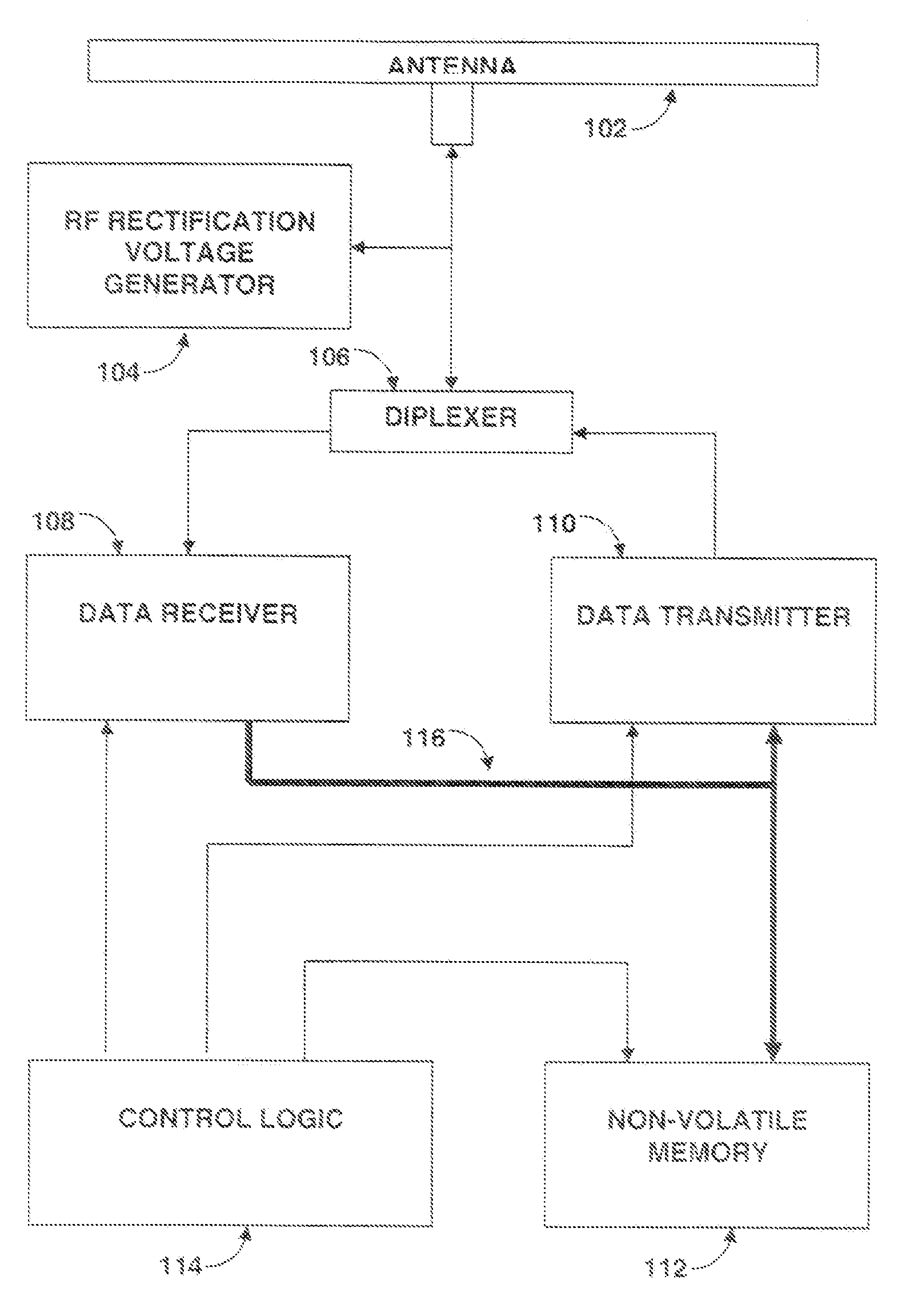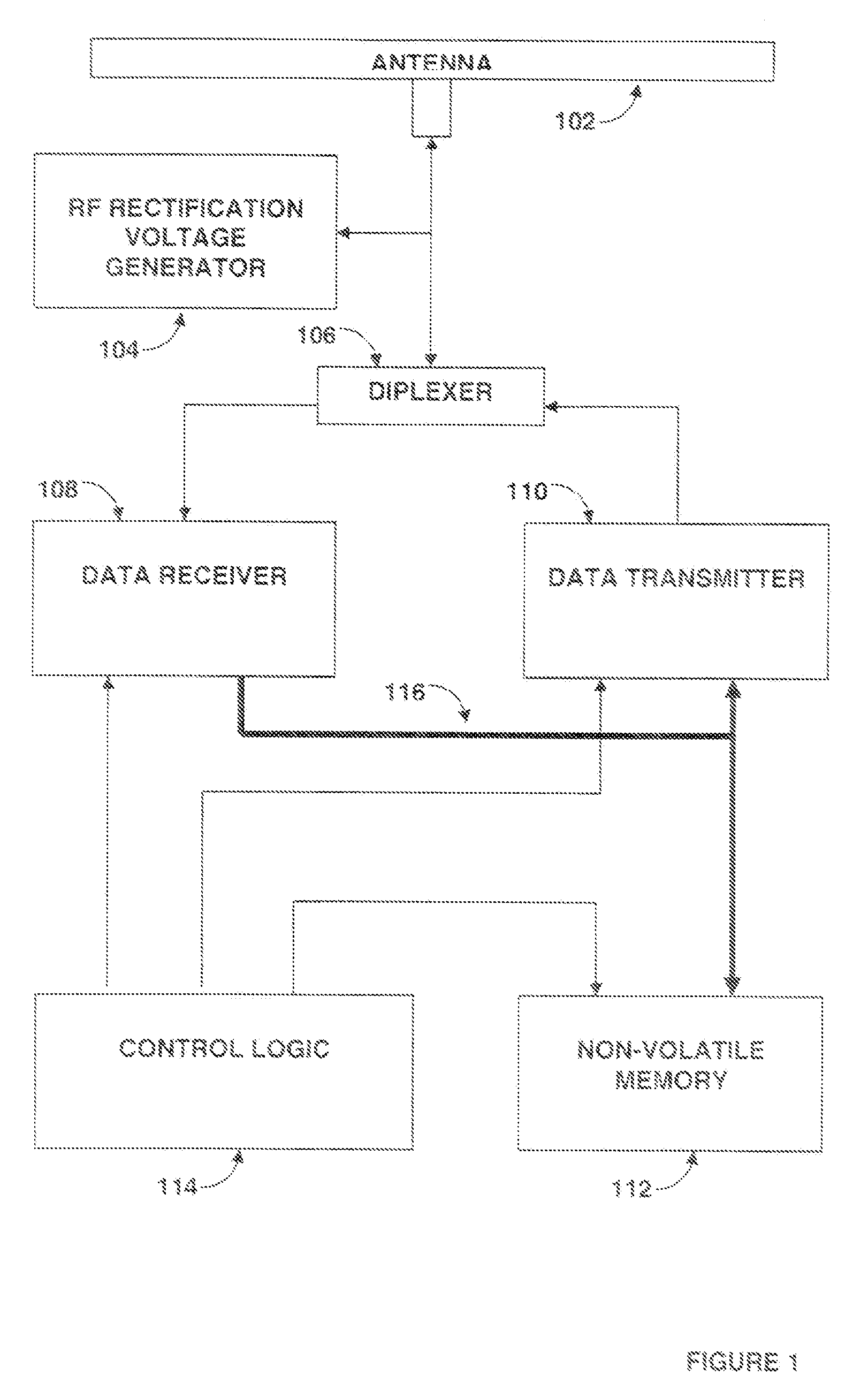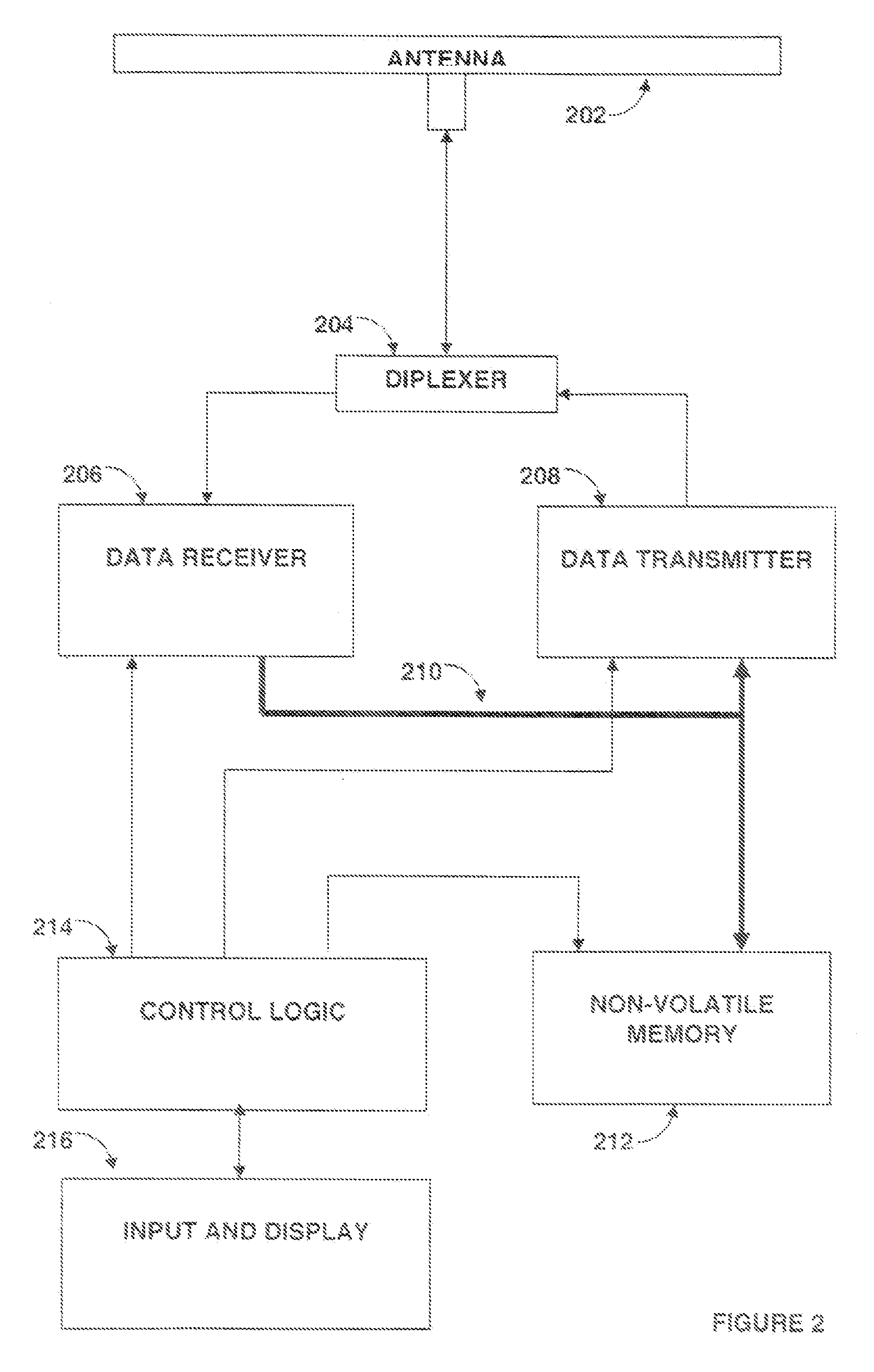Propagation of data throughout an area using distributed transponders and scanners with relative movement
- Summary
- Abstract
- Description
- Claims
- Application Information
AI Technical Summary
Benefits of technology
Problems solved by technology
Method used
Image
Examples
Embodiment Construction
[0020]Embodiments of the present invention and its advantages are best understood by referring to FIGS. 1 through 6 of the drawings, like numerals being used for like and corresponding parts of the various drawings.
[0021]FIG. 1 is a block diagram of a typical transponder, which in some embodiments is a passive RFID tag. Antenna 102, when excited by the radio-frequency (RF) field of a nearby transmitter (scanner), generates an alternating current or voltage which is rectified by RF rectification voltage generator 104. This rectified RF signal produces the voltage and current required for operation of the RFID tag, thus eliminating the need for a battery in the RFID tag. Alternate tag embodiments, called active RFID tags, use a battery rather than rectified RF for power, typically to allow greater transmit power and range. RF energy from antenna 102 also is coupled to diplexer 106. This diplexer acts to couple received energy from the antenna 102 to data receiver 108 (during reception...
PUM
 Login to View More
Login to View More Abstract
Description
Claims
Application Information
 Login to View More
Login to View More - R&D
- Intellectual Property
- Life Sciences
- Materials
- Tech Scout
- Unparalleled Data Quality
- Higher Quality Content
- 60% Fewer Hallucinations
Browse by: Latest US Patents, China's latest patents, Technical Efficacy Thesaurus, Application Domain, Technology Topic, Popular Technical Reports.
© 2025 PatSnap. All rights reserved.Legal|Privacy policy|Modern Slavery Act Transparency Statement|Sitemap|About US| Contact US: help@patsnap.com



